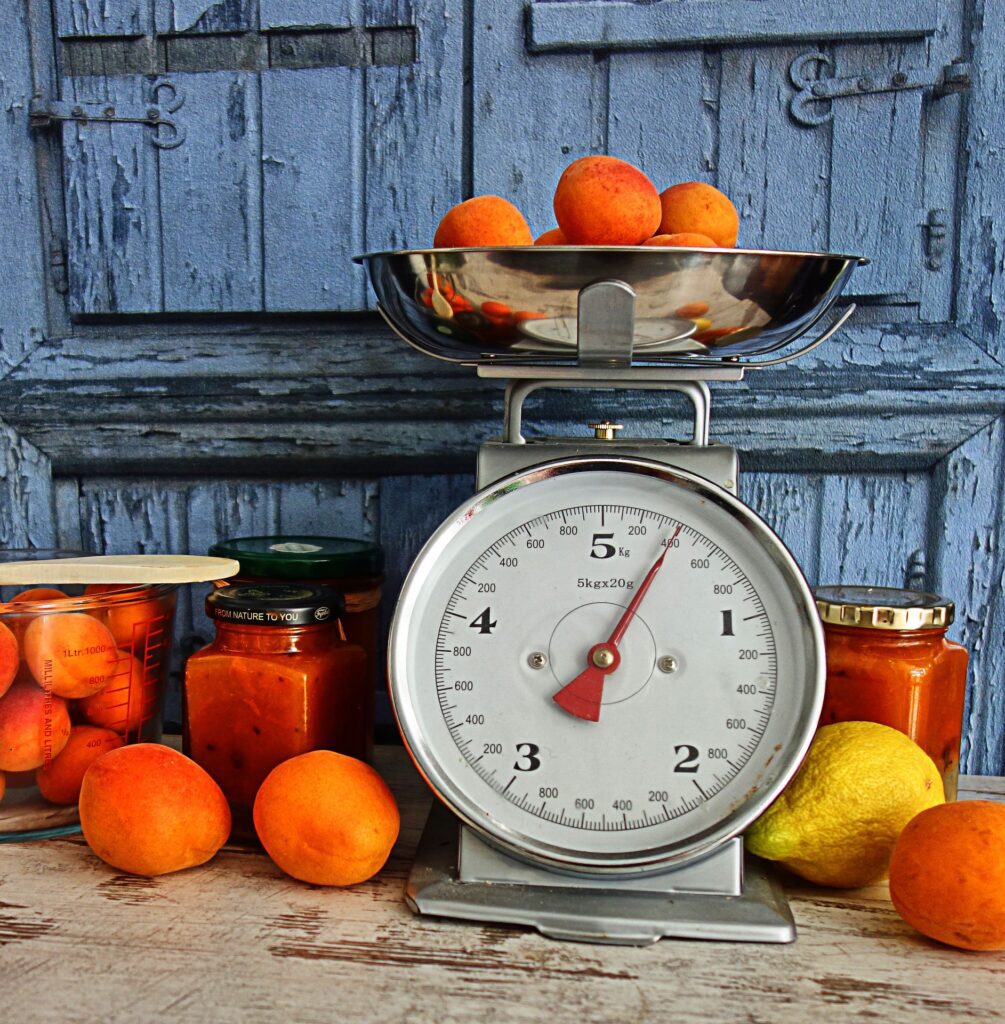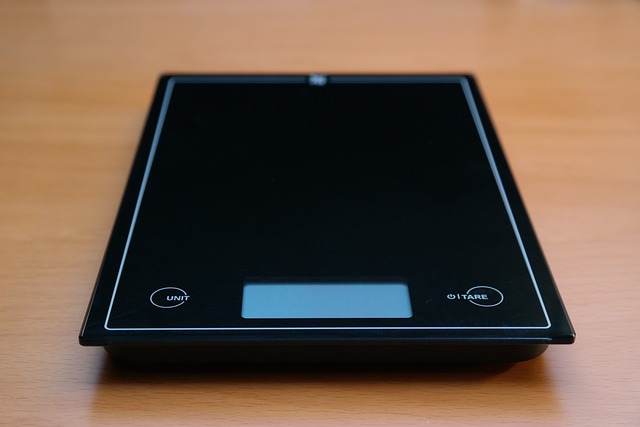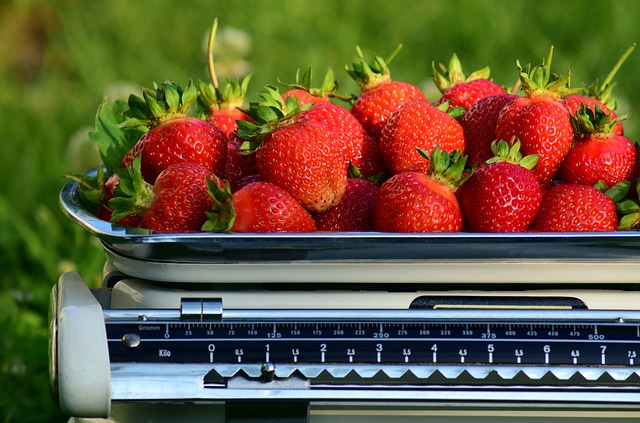If you’re anything like me, you sometimes find yourself wondering if you’re using the right measurement when cooking. For example, is a cup of flour supposed to be a light and fluffy mound or packed in tightly? And do I need to be precise when measuring butter or oil for a recipe? Fear not, intrepid preserver! With the help of kitchen scales, many of your questions (and then some) may be answered.

Lets look at what these scales are, and why they’re important in the cooking process. As well as a few tips on how to best use them. It’s time to get scaling!
What are kitchen scales?
Kitchen scales are devices used to measure the weight of food ingredients.
Early versions of these scales include:
Weighing scales – This design consists of two plates/holders attached to an overhead beam. A central pole holds the entire structure in place. To take measurements, you would put the object being measured on one plate and then weights on the other until they balanced each other out.
Spring balance scales – The scale employs gravity to weigh an object, as explained by Hooke’s Law. By measuring the pressure on a spring, this device can determine the weight of whatever is being weighed.

Today, most kitchen scales typically have a flat surface on which to place the ingredient and a digital display that shows the weight. Simple analogue display variants can be considered to be modernised spring balance scales which have been used successfully for a long time.
Most, but not all, modern scales can be used to measure both dry and wet ingredients. Scales are an essential tool for many recipes.
There are many different types of cooking scales available on the market, so it is important to choose one that meets your specific needs.
Why are they important when cooking?
If you’ve ever tried to make preserves at home, you know that precision is key because of the importance of getting the relative proportions of ingredients right to realise a successful result.
Weighing scales help you to achieve the ideal ratio of ingredients. Too much sugar and your jam will be too sweet; too little, and it won’t set properly. The same is true for other ingredients like pectin and acids. Your scales help you to measure these critical ingredients accurately, ensuring that your preserves turn out the way you want them to.
But kitchen scales aren’t just for making preserves. They’re also useful for baking, cooking, and even portioning meals. People also use them to measure the weight of other objects e.g. parcels for posting, so there is some inherent versatility to be had with this tool – just remember that scales do have a maximum weight.
So, if you’re looking to up your kitchen game, investing in a good set of kitchen scales is a great place to start.
Types of kitchen scales:
Kitchen scales come in many different shapes, sizes, and colours. This wide variety ranges from simple mechanical, analogue models to more sophisticated digital versions. As well as designer options too!

Mechanical kitchen scales are the more traditional option. They typically consist of a metal platform that is attached to a pointer arm. The pointer hovers over a range of is marked measurements. When an ingredient is being weighed, the pointer moves to indicate the measurement. These types of scales are generally very accurate, but they can be somewhat difficult to use if you are not familiar with them. There is a wide range of designs for this type of scale from small hand-held versions to big commercial scales.
Digital kitchen scales, on the other hand, are much easier to use. They typically have a digital LCD that shows the weight of the ingredient being measured. Some digital kitchen scales also have built-in timers, and conversion options, making them a more versatile kitchen tool. While they may cost a bit more than their mechanical counterparts, digital kitchen scales are well worth the investment for anyone who likes to bake or cook frequently.
As there are so many different types of kitchen scales available on the market, so it is important to choose the one that best suits your needs.
They can be bought in many different places, including grocery stores, kitchenware stores, and online retailers.
Tips for using kitchen scales:
1. It is important to make sure that the scales are on a level surface. This will facilitate accuracy when measuring.
2. To get the most usable and relevant measurement, it is best to use kitchen scales that measure in grams or ounces. This way, you can be precise with your measurements relative to the measurements in many recipes.
3. Be sure to “zero out” or ‘tare’ the scale after weighing each individual ingredient, even if you add them all to the same bowl. This ensures that each measurement is accurate.
4. When measuring liquids, it is best to use a glass or metal container that is designed for kitchen scales or that can sit securely on the scales base. This will help to prevent spills and messes.
All in all, kitchen scales are a helpful tool for anyone hoping to improve their preserving success and are to be considered an essential tool for the modern-day preserver. Too much of one ingredient can result in a hard-set jam, while too little might leave it too runny. By investing in a reliable kitchen scale, you can limit these mishaps and create some beautiful preserves more consistently.
By being able to be clear about the right amount of ingredients, you can take the stress out of starting a recipe and steadily grow in confidence about your preserving skills. So, do not be without kitchen scales next time you go to whip up a batch of preserves!